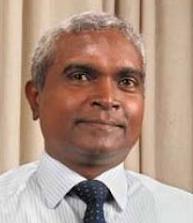04th April 2013, www.lankabusinessonline.com
Costs claimed by Sri Lanka’s power monopoly Ceylon Electricity Board are murky, the efficiency of expensive plants and other costs are not independently audited, respondents at a public hearing on a proposed tariff hike said. Disallowing around 30 billion rupees from the tariff filing also raised more questions about cost transparency he said.

Siyambalapitiya said the inclusion of three retired power plants for dispatch in 2013 by the CEB, and PUCSL’s assumption that such energy can be provided by hydropower plants, were both irresponsible actions. He said CEB’s tariff methodology misinterpreted an established tariff methodology. A bulk supply account which was supposed to have been set up in 2011, which would make many costs transparent, was still not in existence.
Siyambalapitiya said the regulator should also have clawed back 13 billion rupees allowed in 2011. The claw back alone could cut the tariff by 6.0 percent. He said transmission and distribution losses of both CEB had Lanka Electricity Company (LECO) had come down to 12 percent ahead of target for which they should be commended. But the CEB’s transmission unit had losses of 4.4 percent which was higher than the 3.0 percent target for 2012.
There was no independent calibration of transfer metres between transmission and distribution and also between generation and transmission and most were related parties. Tilak Siyambalapitiya, a top energy sector expert said the basis on which power plants were to be used in 2013 (dispatch schedule) was unknown.
The dispatch schedule was not according to the tariff methodology required by the regulator but even if another methodology was used, it has not been disclosed, he told a hearing called by the Public Utilities Commission of Sri Lanka. The efficiency of the plants was not known, he told a public hearing on a proposed tariff hike called by the regulator. The actual heat rates were supposed to be tested by a certified technical auditor.
“Where are these tests?” he asked.
Sri Lanka’s thermal plants have peculiar costs with combined cycle plants being more expensive than less efficient than smaller diesel plants. Laxman Siriwardene, from Pathfinder, think tank said costs at the CEB; a state monopoly was not transparent. He said the regulator itself has removed 15 billion rupees in costs and refused to allow three plants whose contracts had expired.
Siriwardene said while there was a principle that tariffs should be cost-reflective, there was no way to determine the actual costs. He said there was no information about other expenses of the CEB which had 17,000 employees.
